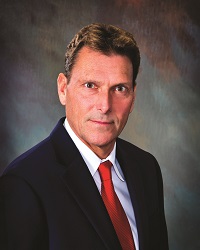By EB5 Investors Magazine Staff
EB5 Investors Magazine is pleased to announce the Top 5 Economists, selected in an industry-wide vote. To be eligible, distinguished economists needed to draft economic impact studies for the EB-5 industry.
For more information or to contact any of these professionals, we invite you to view their listings at www.EB5Investors.com/directories.
Scott W. Barnhart
President
Barnhart Economic Services LLC

Scott W. Barnhart is president of Barnhart Economic Services LLC, a consulting firm that employs three PhD economists specializing in EB-5 and non-EB-5 economic job creation studies, business plans and TEA designations. Barnhart is also a co-owner of Florida First Regional Center and an associate professor of finance and the program director of the Certified Financial Planner program at Florida Atlantic University. The firm has used RIMS II and IMPLAN input-output models to estimate the job creation impacts in support of I-924 regional center applications, I-924A and I-829 job reporting for dozens of regional centers resulting in more than 450 job creation and TEA reports submitted to USCIS in the EB-5 program. To date, the firm has analyzed a wide variety of projects, from destination resort hotels to large strategic infrastructure projects, with capital expenditures of more than $14.45 billion with associated gross revenues of $9.72 billion and job creation estimates of over 260,000 jobs.
What new types of projects and trends are you seeing in the EB-5 industry?
We have seen a good number of non-traditional projects including: franchise restaurant chains, marine ports, power generation (electrical, solar and biomass), manufacturing facilities and oil production. Restaurants have large multipliers, in the range of 25-30 jobs per $1 million of gross revenue, but they don’t always have real estate assets as collateral as many lease space. On the other hand, manufacturing has smaller multipliers, but typically has real estate and other assets in the case of default. For some such non-traditional projects there is no real estate to seize if a default occurs, yet other assets have been pledged as collateral.
Are you seeing any signs that the community are starting to adjust to possible TEA changes?
Project managers ask about “potential new” TEA areas thinking that certain locations carry advantages. We are examining this to better advise our clients on what to look for in newly-defined urban distressed locations. Regarding reforms, I wish to see visa numbers expanded or not count family members. Adjudication should also be sped up. The current rate of up to two years prohibits credible business decision-making. Finally, I know the original intent of the law, but TEAs should be eliminated or abolished. A luxury hotel in a rural or very high unemployment area may not be profitable. However, the jobs will be created regardless of location and hotel staff typically commute from lower-income neighborhoods.
President and Senior Economist
Economic & Policy Resources

Jeffrey Carr is president and senior economist of Economic & Policy Resources and has more than 35 years of experience as an economist, business plan writer and analyst. At EPR, Carr has completed more than 225 assignments under the EB-5 program in 46 states and territories. These include economic-job impact studies for regional center applications and investor petition filings, EB-5 project business plans, targeted employment area analyses and regional center business-operations plans. Carr has lectured on issues related to EB-5 economic and job impact studies and EB-5 project business plans throughout the United States and China. He was a member of the “Best Practices Committee” for IIUSA in 2013 and has since 2014 been a member of the IIUSA Public Policy Committee.
What new types of projects and trends are you seeing in the EB-5 industry?
As visa numbers become a larger issue for the industry, we are seeing mostly smaller projects, with their attendant smaller EB-5 capital raises, coming into the EB-5 marketplace. New projects also appear to be trending more toward niche or special markets that are of more interest to potential investors outside of the Chinese mainland. This is likely to continue until a direct or indirect solution to the visa number problem for mainland Chinese EB-5 investors is found. Project developers also seem to be looking more closely into projects that are located in rural areas.
Are you seeing any signs that the community are starting to adjust to possible TEA changes?
Since the Department of Homeland Security’s publication for draft regulations, it has become common for prospective EB-5 projects to evaluate TEAs based on both current law and at least one alternative set of prospective TEA rules, usually the most restrictive of the major TEA reform proposals. In terms of other reforms, we, like all service providers and regional centers, would support more stability in the program through a clearly articulated and fair set of rules to operate by. We do not support new rules or integrity measures that are not workable or pit one part of the industry against another.
Michael K. Evans
Chairman
Evans, Carroll & Associates Inc

Michael K. Evans is the Chairman of Evans, Carroll & Associates Inc. Evans has been providing economic forecasting and consulting to clients since 1970. He has prepared over 500 economic impact reports for projects under the EB-5 program, as well as models of state and local tax receipts, impact of current and proposed government legislation and construction of economic models for individual industries and companies. As chief economist for the American Economics Group from 2000 to present, Evans has also built a comprehensive state modeling system that provides economic analysis for a variety of consulting projects. Previously, Evans founded and served as president of Chase Econometric Associates between 1970-1980, served as clinical professor of Economics at Kellogg Graduate School of Management at Northwestern University between 1996-1999 and assistant and associate professor of Economics at Wharton School of the University of Pennsylvania between 1964-1969. Evans holds a Ph.D. in Economics from Brown University.
Partner and Lead EB-5 Economist
Impact DataSource

Michael Kester is partner and lead EB-5 economist with Impact DataSource. Established in 1993, Impact DataSource is a Texas-based consulting firm specializing in high-quality economic and fiscal impact research services. The firm began offering specialized EB-5 services in 2010 and has become a leading resource for the industry. Kester leads the firm’s specialized EB-5 economics team, which offers EB-5 consulting services, analyses and deliverables that reflect the evolving needs of EB-5 clients and ever-changing requirements of USCIS. The EB-5 team has completed more than 350 comprehensive EB-5 economic studies, analyzed over 2,000 sites for TEA-eligibility, assisted clients in obtaining hundreds of TEA letters and successfully helped clients on many complex EB-5 cases. Kester and his team are also part of USAdvisor’s due diligence team, and speak regularly on industry panels and webinars. Kester has a degree in Mathematics from Kansas State University.
What new types of projects and trends are you seeing in the EB-5 industry?
While the majority of projects that we see are still hotels, multi-family, mixed-use and similar real estate projects, over the past year or so we have seen a small but noticeable trend in manufacturing- and infrastructure-based projects. This may be reflective of some of the proposed legislation that would give automatic TEA qualification to these types of projects. Although what we have observed thus far has been a small trend, we do anticipate changes to the types and locations of projects to occur once new legislation, if any, is passed.
Are you seeing any signs that the community are starting to adjust to possible TEA changes?
It seems that EB-5 stakeholders are making a concerted effort to stay in-the-know about potential changes to TEA definitions. Our clients are becoming more concerned whether a location qualifies under the proposed definitions that might be enacted. However, with everything still up in the air, we are not seeing any firm adjustments being made yet. We would like to see the EB-5 program obtain a permanent authorization, or at least a long-term extension, so that the industry can be on solid footing to best continue to help promote economic growth in all communities that seek it.
EB-5 Economist & Consultant
Baker Tilly Capital Group

Kevin Wright is an EB-5 economist and consultant with Baker Tilly Capital Group. He works within the EB-5 and New Markets Tax Credit practice areas to provide flexible and affordable capital to qualifying projects and businesses. Within EB-5, Wright works with regional centers and project sponsors to design and structure secure and marketable projects that meet the needs of potential investors from around the world. Wright’s experience in the EB-5 industry dates back to 2006. As the founder of Wright Johnson LLC, Wright was responsible for the creation of over 200 regional centers and he has authored hundreds of economic studies in many diverse industry sectors. He is a frequent speaker on EB-5 in several markets including China, Thailand, Hong Kong, Brazil, Korea, Mexico, United Arab Emirates, Turkey and Vietnam. Additionally, Wright is a former IIUSA committee member and is a current member of the President’s Advisory Counsel.
Why did you get involved in the EB-5 industry?
When I became involved in the EB-5 industry it was very early on and a couple of years before the economic crash of 2008. What really attracted me to the industry is its complexity. There are so many challenging facets to the program that I found stimulating, including its global nature, where you have the opportunity to meet unique families from diverse cultures and help them to become a part of the American dream.
What new types of projects and trends are you seeing in the EB-5 industry?
With the meltdown in Chinese investment due to the retrogression, we see that investment is down 75 percent in China. The agents are seeking rural projects based upon the idea that new legislation will allow investors in rural projects to move to the front of the line. As an industry, we see project developers more evenly focused all around the world and not just focusing on China. There has been a dramatic increase in investors from Vietnam, India and South America. We have also seen the shift towards the use of broker dealers in the EB-5 space.
DISCLAIMER: The views expressed in this article are solely the views of the author and do not necessarily represent the views of the publisher, its employees. or its affiliates. The information found on this website is intended to be general information; it is not legal or financial advice. Specific legal or financial advice can only be given by a licensed professional with full knowledge of all the facts and circumstances of your particular situation. You should seek consultation with legal, immigration, and financial experts prior to participating in the EB-5 program Posting a question on this website does not create an attorney-client relationship. All questions you post will be available to the public; do not include confidential information in your question.







